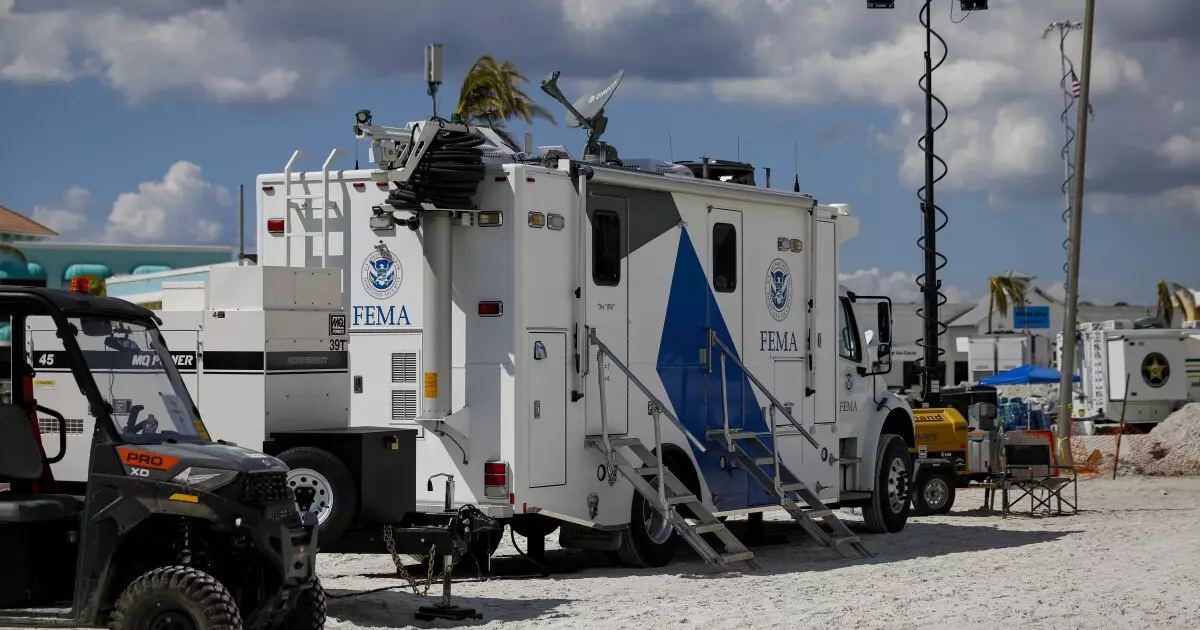The recent warnings from S&P Global Ratings and industry experts like Tom Kozlik bring to light a financial time bomb awaiting detonation in U.S. municipal bonds. As federal funding to the Federal Emergency Management Agency (FEMA) faces crippling cuts, we are headed toward an era where municipalities, particularly those in disaster-prone regions, will grapple with a precarious financial future. Cuts to FEMA may not just be numbers on a budget sheet; they could represent a profound shift in how communities access vital disaster relief, inevitably causing a surge in financial instability.
The Uneven Burden of Disasters
The Southeast and Gulf Coast areas, now at the eye of this storm, are vulnerable to an unsteady disaster response landscape. With growing concerns about climate change leading to frequent hurricanes and flooding, the implications of reduced federal support for disaster recovery are dire. Kozlik voiced a compelling argument about “localized risks,” which captures the essence of how these budget cuts will isolate certain bond issuers, amplifying community vulnerabilities. Municipal bonds tied to regions with high disaster frequency will become a more unpredictable investment, increasing exposure to fiscal instability.
The shifting policy surrounding FEMA signals an intent that might seem politically aligned, but in practical terms, it threatens the backbone of financial support for areas needing it most. States grappling with environmental issues will have little choice but to raise taxes or risk a spiral into disarray, turning many municipalities into financial wastelands unable to recover from storms, fires, and floods.
The Ripple Effect on Bonds and Credit Ratings
This precarious situation could manifest in a variety of ways: liquidity crises, reserve withdrawals, and dramatic decreases in tax revenue. S&P’s projections indicate that the absence of a strong federal support system could lead to a worsening credit profile for vulnerable bond issuers. If municipalities can’t recover financially after weather disasters, it will trigger a domino effect; fewer investors will want to acquire these bonds, leading to even lower credit ratings.
Investors should be wary. The uncertainty surrounding FEMA’s future might scare off capital inflow, leading to diminished public services, deferred infrastructure projects, and increased unemployment rates. Furthermore, states nestled in disaster-heavy regions risk relying on damaging fiscal maneuvers like using emergency reserves or diverting funds meant for critical healthcare, education, and public safety.
The Federal Government’s Role: An Uncertain Future
The looming possibility of raising thresholds for FEMA assistance is another worrying notion. If the government progresses with this policy adjustment, the immediate ramifications would almost certainly include strained resources at the local level. Communities already reeling from natural calamities would find themselves standing alone, left to fend for their fiscal lives amidst a chaotic landscape of increased insurance premiums, higher local taxes, and diminished federal aid.
The notion that federal spending on FEMA has surged since 2010, supposedly due to the ever-present threat of climate change, now seems contradictory. If climate change is genuinely a driving concern, why dismantle a vital college fund for surviving its consequences? The answer may point to a center-right political ideology that values reduced federal intervention, yet this perspective risks ignoring the stark reality on the ground where communities are sinking into debt and despair.
In light of these troubling predictions, it’s crucial for concerned citizens and bond investors alike to rally for a smarter, more sustainable approach to disaster management strategy. While idealists may argue for complete FEMA reform, rendering it less financially burdensome, real-world responses must adapt to the increasing frequency of disasters, ensuring that municipalities have the requisite support to thrive, not merely survive.
As we navigate this potential crisis, the key takeaway is that ignoring the challenges faced by vulnerable communities may lead to a financial apocalypse that transcends immediate concerns, moving toward a more critical conversation about the role of government in disaster relief. The decisions made today may dictate not only the financial landscape but, more importantly, the safety and resilience of our neighborhoods against mother nature’s fury.


Leave a Reply